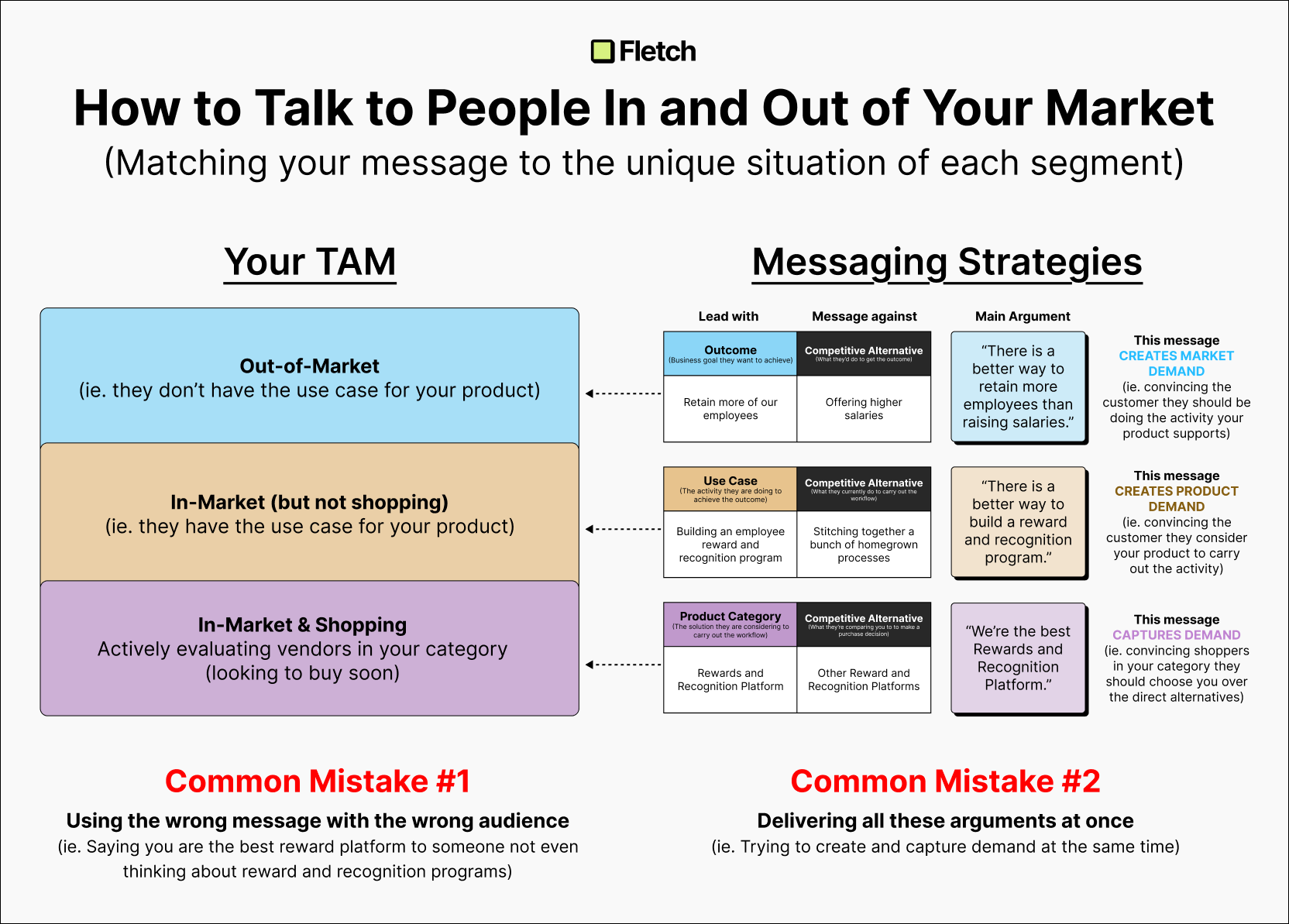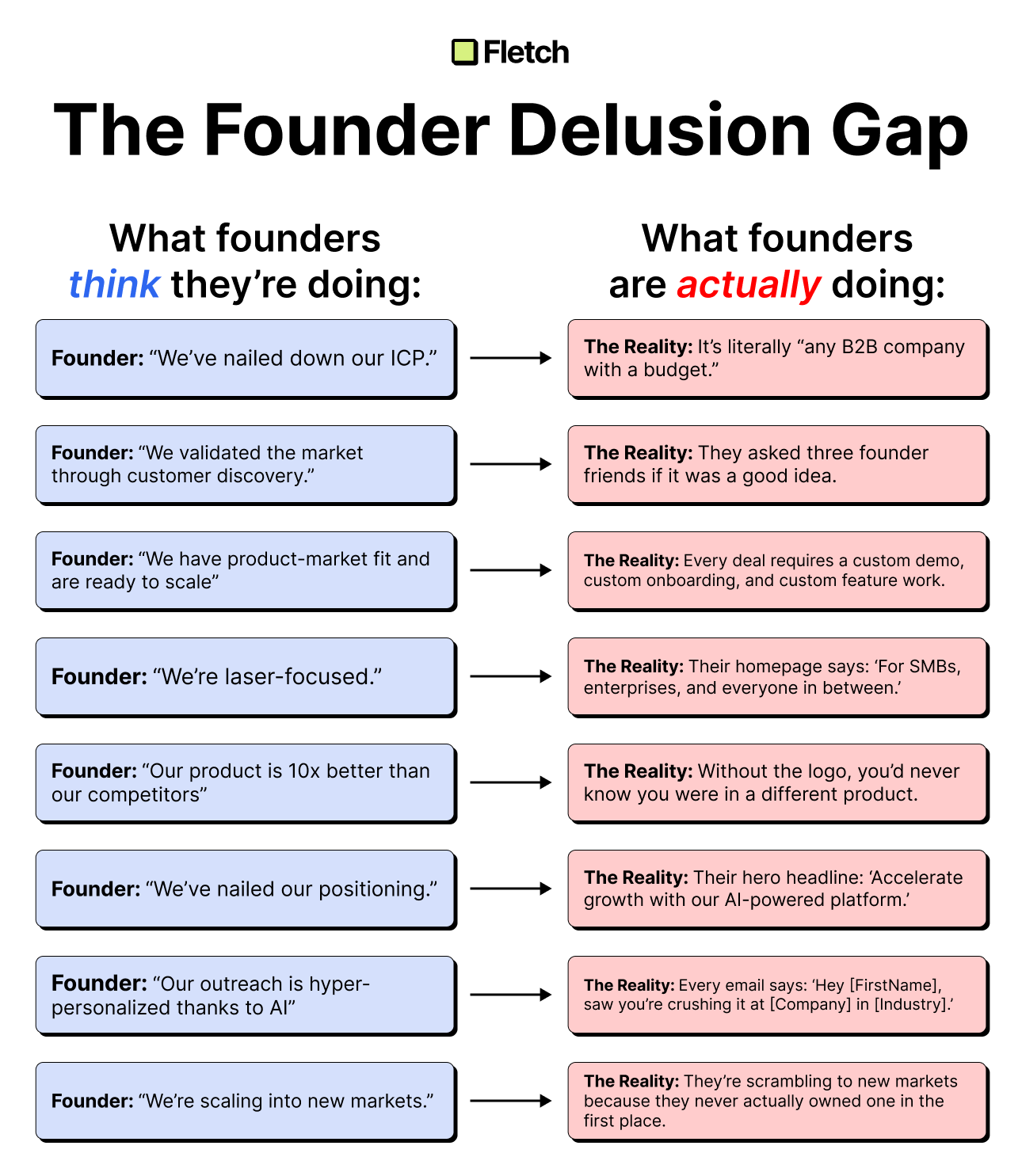6 Ways To Position Your Product


🧭 6 ways to position your product 🧭
🟡 Anchor to a well-known product for a new segment
Ex: Figma for non-designers → Canva
When to use?
→ When you are in the very early stages trying to get first customers
→ When you are taking a niche product strategy
This approach can work in many different ways depending on the criteria used for segmentation
🟣 Anchor to well-known product in adjacent category
Ex: Robinhood for crypto → Coinbase
When to use?
→ When the technology/product is not well known
This one can be useful when there isn’t anyone “in-category” to compare to.
This approach rarely creates a complete picture of what the product is or exactly who it is for…
But it can help start the conversation with customers
🟢 Highlight a key feature in and existing category
Ex: Circus w/ a production storyline → Cirque Du Solei
When to use?
→ When taking a blue ocean approach to creating a new category
→ When you have a kick-ass feature that sets you apart
This approach acts as a bridge from a well-known category to something that competes with a new set of features.
🔵 Highlight a key benefit in an existing category
Ex: The cheapest way to fly → Southwest Airlines
When to use?
→ When you are in a mature category
This is similar to #3, but without creating a new category.
🟠 Be first in a new category
Ex: The first cloud CRM → Salesforce
When to use?
→ When you are trying to solidify existing marketing awareness
This approach doesn’t exactly create clarity.
But it does create intrigue for early adopters.
⚫ Tout external approval (most used, highest rated, most popular)
Ex: The most used search engine → Google
When to use?
→ When you are already a market leader
This is all about maintaining the current customer perspective.
_
The common thread for all these approaches?
⚓ They all anchor to something well-known
Why?
Because positioning is relative.
And if there is nothing for a customer to relate you to...
💢 They won’t find or understand you.

Ben Wilentz
Founder, Stealth Startup





